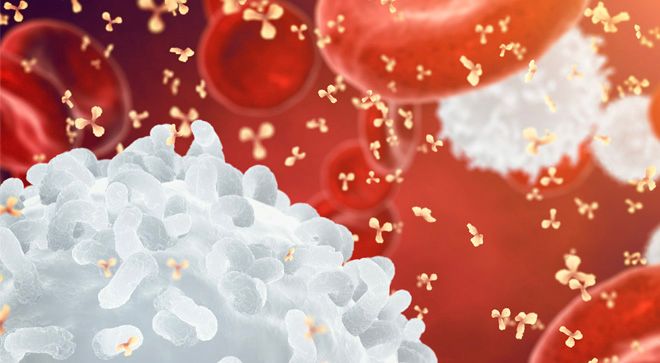Article
Pharmacologic Data Supports Use of Novel CAR T-Cell Therapy in Patients With Poor-Risk Mantle Cell Lymphoma
Author(s):
“Altogether, this pharmacological data supports the concept of CAR T-cell therapy being able to overcome MCL disease with poor risk factors,” said lead study author Dr. Luhua (Michael) Wang.
Researchers have identified a relationship between a novel autologous anti-CD19 CAR T-cell therapy, KTE-X19, and subsequent resulting effects, noting that the drug was associated with efficacy and treatment-related neurological events in patients with relapsed/refractory mantle cell lymphoma treated within the ZUMA-2 trial.
Data presented during the 2020 American Society of Clinical Oncology (ASCO) Virtual Scientific Program demonstrated that KTE-X19, when compared with current approved therapies, had similar pharmacologic and clinical outcomes in patients with high-risk MCL characteristics versus lower-risk characteristics defined by tumor protein TP53 mutation or high Ki-67 proliferation index.

Patients who have these higher-risk characteristics, according to the researchers, typically have poor prognosis when receiving standard therapies.
“KTE-X19 pharmacokinetic and pharmacodynamic profiles were generally comparable across lower and high-risk patients consistent with comparable clinical responses with a trend toward increased pro-inflammatory markers in patients with a mutated TP53,” said Dr. Luhua (Michael) Wang, a professor in the department of lymphoma and myeloma at The University of Texas MD Anderson Cancer Center, in a pre-recorded presentation. “In addition, the pharmacodynamic profile of KTE-X19 was associated with the efficacy including early (minimal residual disease) status and grade four neurotoxicity.”
Previously, results from the primary efficacy analysis of the ZUMA-2 trial demonstrated that patients with relapsed/refractory MCL — who had received anywhere from one to five therapies — achieved an objective response rate of 93% (67% complete responses) after receiving KTE-X19, meaning patients experienced a tumor size reduction of a predefined amount for a minimum period of time. The results were generally comparable among patients with high-risk disease.
To identify the relationship between the drug and resulting effects in patients who achieved MRD-negative status by day 28 and who presented with a grade 4 neurotoxicity, researchers conducted a comparative analysis and analyzed product attributes, CAR T-cell and serum cytokine levels in the blood, as well as any associations with clinical outcomes.
MRD was identified in 29 of the available 68 patients. Of those 29 patients, 83% (19 complete response and 5 partial response) reached MRD negativity one month after receiving KTE-X19.
At one month following KTE-X19 treatment, patients who were MRD-negative had increased median cytokine levels. Those levels, according to the data, peaked in blood samples within seven days of treatment.
Six patients developed neurologic events that were labelled as grade 4 in severity, including one case of cerebral edema. Three of those patients developed concurrent grade 4 cytokine release syndrome.
“Altogether, this pharmacological data supports the concept of CAR T-cell therapy being able to overcome MCL disease with poor risk factors,” concluded Wang.



